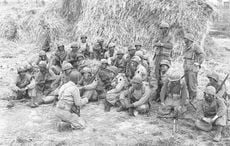Irish thatched cottages (teach ceann tui) were historically the homes of farm workers and labourers, the homes of the ordinary people. Their design was simple, usually two bedrooms, each with a fireplace, and a central living and cooking space. This main room was dominated by a large hearth, about which daily life revolved. In the evenings, the fire under the hooded canopy provided warmth to residents and visitors alike. People would gather to talk about events of the day, tell stories, sing and dance. The fire was rarely let out. Ashes would be strewn over it at night to keep the embers alive for the morning.
But the fire did go out on these traditional buildings. Thatched cottages were once to be seen all over Ireland, but most fell into disrepair and became derelict giving way to newer and modern developments. Thatched cottages are one of the most iconic symbols of Ireland. With less than 1,500 left on the whole island, these dwellings are more precious than ever, a fact that is recognised by bodies such as the Heritage Council and local authorities. There has been a relatively recent revival in restoring these old cottages, with people wanting to maintain the link with the past, whilst adapting or extending the building to provide for modern day comforts.
These cottages are examples of what is known as vernacular architecture. Put simply, this means that they were not designed by a professional, such as an architect or engineer. Our ancestors built their dwellings with their own hands with materials that were available to them locally. Roofs were usually thatched with straw. The use of locally sourced materials and the siting of the cottages meant that they blended with the landscape, becoming part of it.
Read more: Documenting Ireland’s beloved thatched cottages before it’s too late
A notable characteristic of the cottage was the half door. This kept children in and animals out. It could be used as a prop to lean on while smoking the pipe or chatting to neighbours. It allowed light and air in which was much needed given that cottages had only a limited number of windows, the reason for this being the “window tax” which applied to any house with more than six windows.
The back door was situated directly opposite the front door. It has been said that these two doors were necessary to prevent mother-in-laws and daugher-in-laws from using the same door. Many sons brought their new brides home to live beneath the thatch with their mothers, and peace did not always reign. However, it is most likely that the positioning of doors was to ventilate the room.
The recently restored thatched cottage (see pics) is in the rural townland of Meelick, some 12 miles from Ballinasloe in County Galway. This cottage has housed generations of the Cullen family for some 200 years.
One of the Cullens, Patrick played in the first All-Ireland Hurling Final in 1888. He was a carpenter and hurley maker. His workshop was a room in the cottage and according to stories handed down, it was here that the hurleys were made for the Meelick team that represented Galway in the 1888 final. Although defeated by Thurles, representing Tipperary, the name of the small village on the west bank of the River Shannon will live forever in the annals of the G.A.A. because of their historic participation in the first All-Ireland hurling final.
According to local tradition, only Fenians could get on the hurling team and indeed the Cullens were known as a strong nationalist family. Patrick Cullen had to skip it to America because of land trouble in the locality. He never returned. His three nephews, Mikie, Frankie and Tommy were the last of the Cullens to live in the cottage. They never married and lived out their lives in the little house where they were born. They were keen fishermen and fished the abundant waters of the Shannon at Meelick, one of the most important salmon angling areas on the river and renowned for coarse fish.
The youngest of the brothers was Tommy and though considered to be delicate, he outlived them all. He was quiet shy and did not speak much when his brothers were around, but when they both passed away within a year of each other, Tommy made up for all his years of not talking much. He opened his heart and his door to everyone who had the privilege of passing. An engaging storyteller, he loved to share his memories with young and old. He was a religious man and showed this by years of dedication to opening and closing Meelick Church, which has the distinction of being the oldest Roman Catholic church in use in the country.
In the 1980s, Jim Fahey of RTE, interviewed the brothers. When asked about the future of the cottage, Mikie Cullen replied, “I can see nothing happening to it only I suppose no one living in it and it falling...No one will remember it”
Mikie’s fears have not come to fruition. The cottage, which was almost beyond repair, has been carefully restored in recent times. It is soon to be auctioned online and so hopefully, in the not too distant future, the fire will be lit again in this historic cottage in Meelick.




Comments